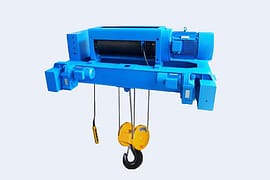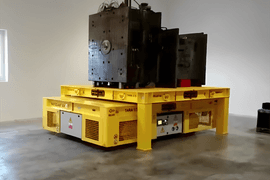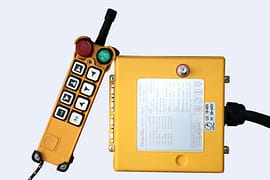How Much Factors That Can Impact Your EOT Crane Runway Alignment
It's something that a lot of companies overlook, but it's more important than you may realize. A properly aligned crane is imperative to meet the performance requirements outlined for the material handling industry, and poor alignment can cause a chain reaction, ultimately resulting in unnecessary wear-and-tear. It's the end user's responsibility to ensure that crane tolerances are within the requirements outlined by CMAA. There are several factors that are essential to ensure your EOT crane runway alignment: elevation levels, spans, straightness, and the overall condition of the runways.
Why is Poor Alignment Such A Big Deal?
Poor runway alignment can cause crane racking, skewing, or binding. It can result in excessive stress to the runway beams and your building's supporting structure. Most commonly, it causes extensive wheel wear and puts unnecessary strain on motor drives and other equipment.
Often times, companies will notice extensive wheel wear and change out their wheels rather than checking their EOT crane runway alignment. It's quite possible that if your trolley is experiencing extensive wheel wear, it's due to a poorly aligned runway.
How Can You Tell?
Sometimes you can't tell at all. Sometimes the crane will run silently down the runway and you have no idea that it's actually not aligned and creating excessive strain on your equipment and building structure. But, oftentimes there are warning signs to look out for.
If your crane moves down the runway and sounds like it's cracking or traveling loudly, you probably have a runway issue. If you're not sure, it's good to have an expert come in to check out your system and perform a full runway analysis. CMAA does outline specifications and guidelines for runways. CMAA 70-2004 1.4 states that runways must be straight, parallel, level, and at the same elevation. All four of these factors are extremely important, and if any one of them is distorted, it can impact the performance of the crane and cause premature wear and tear.
The EOT crane runway alignment specifications outlined by the CMMA and adopted by several other associations (including the Metal Building Manufacturers Association and the American Institute of Steel Construction) are long and somewhat difficult to interpret. But, the main specifications to keep in mind can be simplified to the following:
- Runways must be plus or minus (±) 1/4-inch in a single bay and no more than plus or minus 3⁄8-inch over the full length of the runway.
- These tolerances must be maintained in four positions: left/right, up/down, parallel to one another other, and level with one another.
What Impacts Runway Alignment?
As we mentioned earlier, there are three factors that can cause runways to be improperly aligned: span, elevation, straightness, and runway condition.
Runway Span
Let's start by looking at runway span. If the span of your runway is not within tolerance, it will cause premature system wear, and can even result in racking of the crane. The specifications for runway span are as follows:
- If your span is less than 50 feet, you are only allowed an overall tolerance of 3/16 inch.
- If your span is 50 to 100 feet, you are allowed ¼-inch of tolerance.
- For cranes spanning more than 100 feet, you are allowed up to 3/8-inch tolerance.
These tolerances are pretty small—especially compared to the span of the runway. If you break it down, the numbers allow for a maximum rate of change of ¼-inch for every 20 feet of runway. If you exceed these tolerances and your rail isn't straight, it will rack and cause your wheels and brakes to deteriorate quickly over a short period of time.
Runway Elevation
Runway elevation is another important factor for the proper alignment of your runway. Your runway elevation should be within 3/8-inch on each runway. For cranes spanning less than 50 feet, rail-to-rail elevation should be within 3/16-inch, but for larger cranes—spanning 50 to 100 feet—rail-to-rail elevation should be within 1/4-inch, and 3/8-inch for cranes spanning more than 100 feet. Just like your crane span specifications, the maximum rate of change for elevation is 1/4-inch for every 20 feet of runway.
Horizontal and Vertical Clearances
It's also important to remember your crane-to-building tolerances. CMAA and OSHA require that all moving objects must stay clear of all stationary objects. In other words, your crane and hoist can't interfere with your building structure. OSHA says that in order to avoid interference, cranes and hoists must be installed to clear all horizontal stationary objects by two inches, and all vertical objects (roof trusses, lights, pipes, etc.) by three inches.
Runway Straightness and Overall Condition
Lastly, let's not forget runway straightness and overall condition. How straight your runway is depends on the space between rails. CMAA Standards say 1/16-inch. Some engineers may tell you that the heavier the rail and the larger the wheel, the greater the space can be between rails. But, keep in mind that the CMAA maintains that 1/16-inch specification, no matter the rail size.
Your crane's runway is comparable to the bones of an overall system. They are the foundation by which everything else depends.It's important that your runways aren't extremely old or corroded. Aging runways can distort the span much more easily than newer runways; crane overloads, crane malfunctions, and building settlement call all lead to your runway misalignment.
There are a lot of factors that can impact the proper alignment of your runways, which means it's a good idea to look out for any unusual sounds or signs of racking. If your crane is aging or it hasn't been properly inspected in a while, it's essential to contact a qualified inspector who can evaluate your entire system and check your runways for any discrepancies. Today's technology even allows for runway inspections using transit and laser equipment, meaning that technicians can test your runways quickly and easily, correct any potential issues, and have your crane back up and running in no time.

























































































































